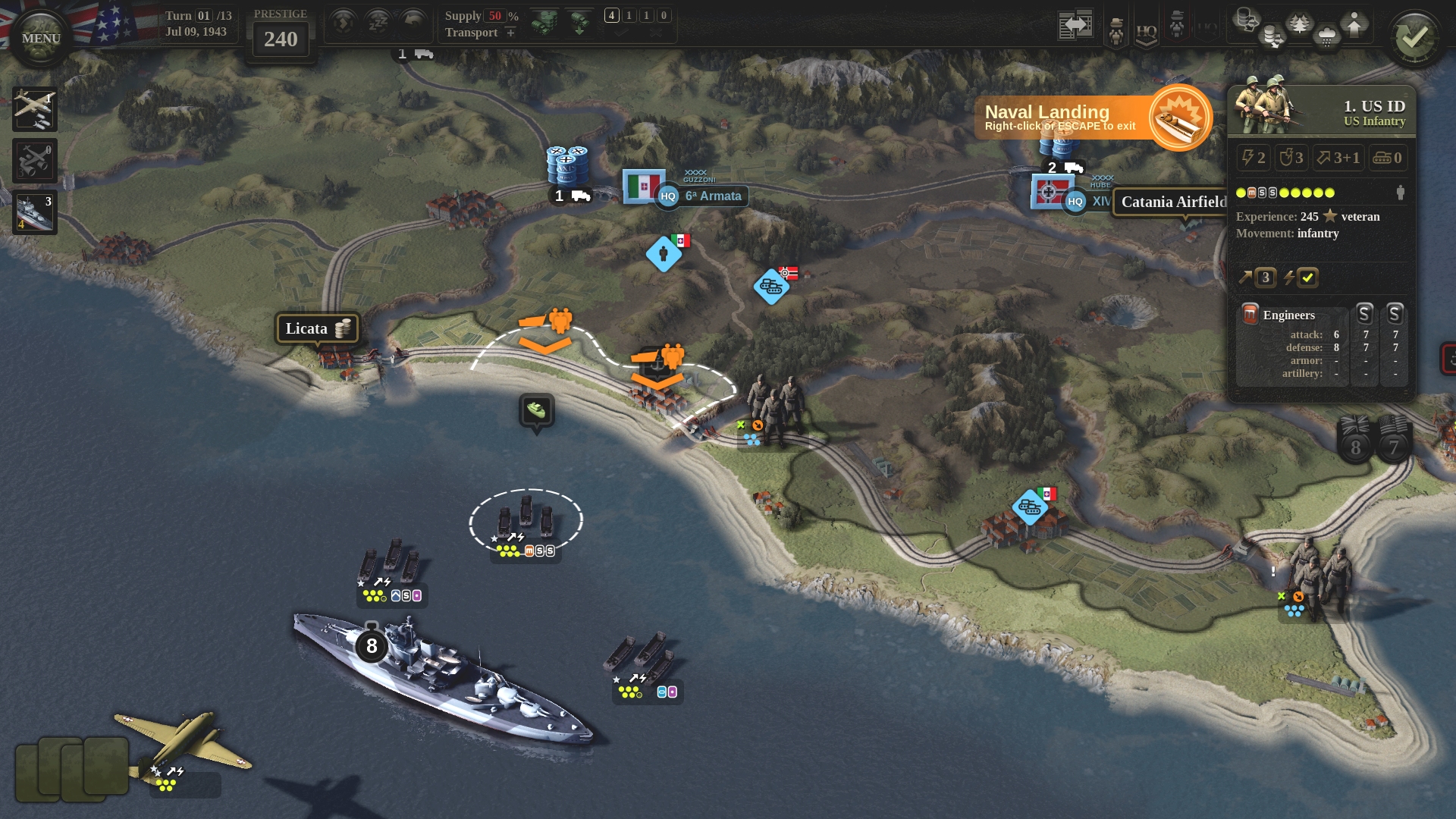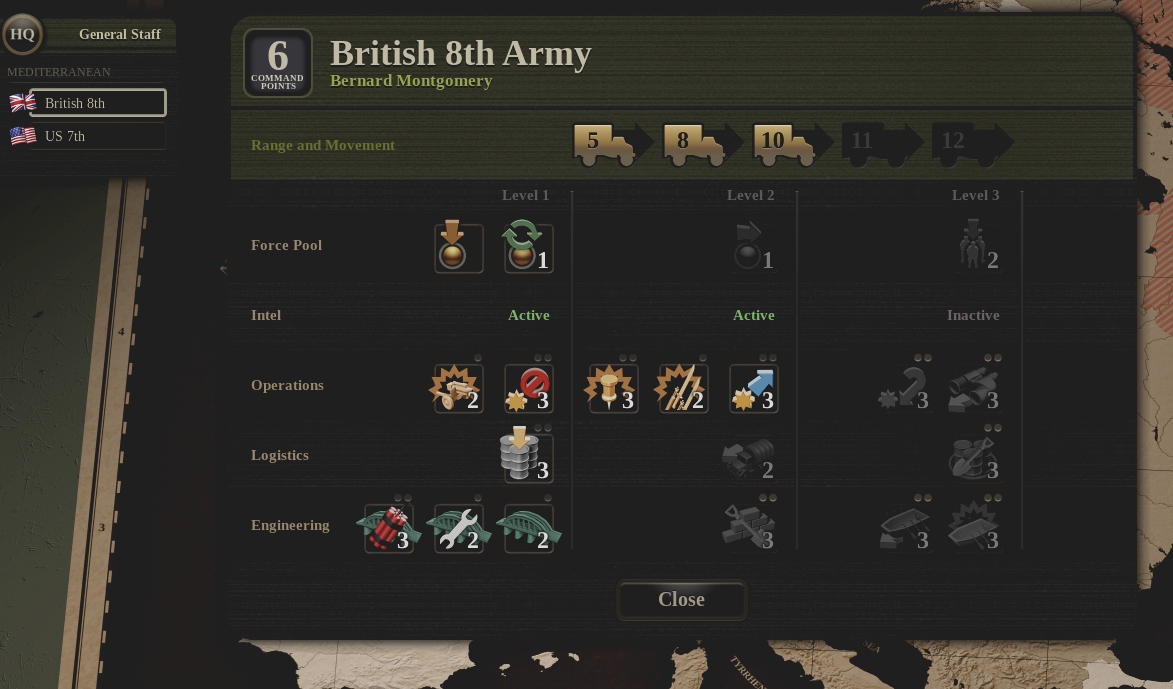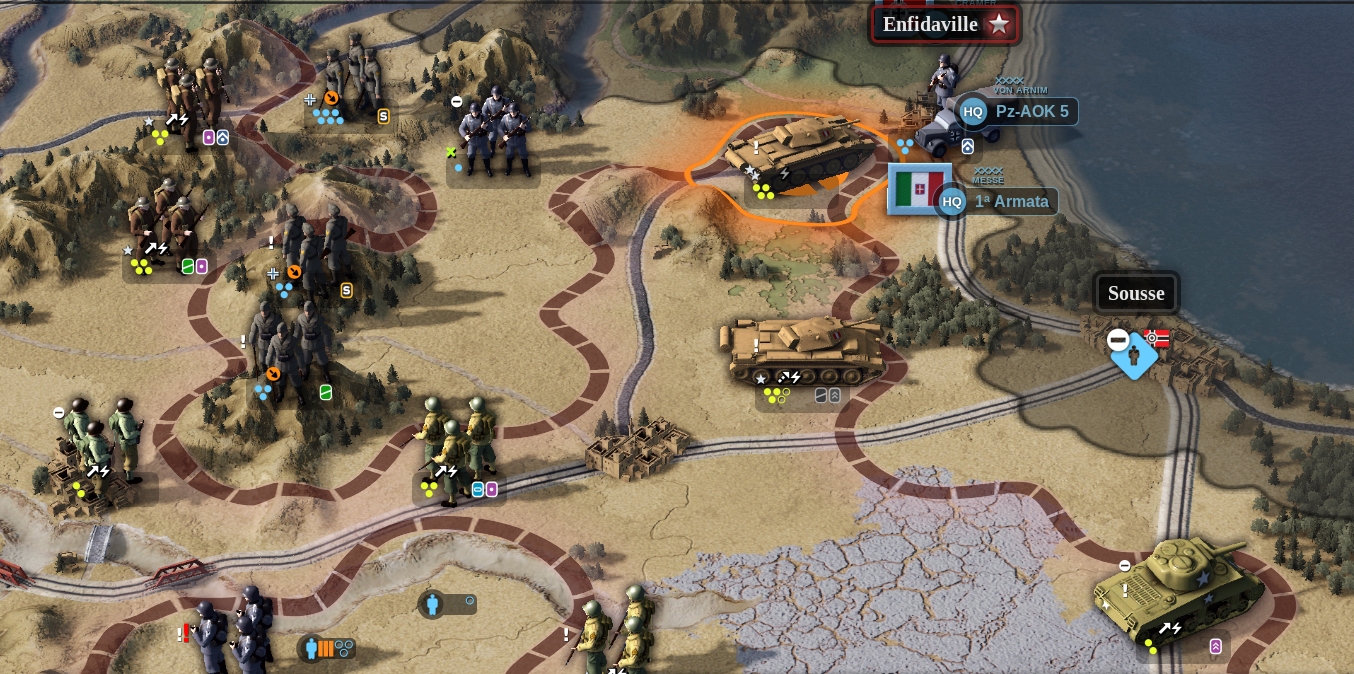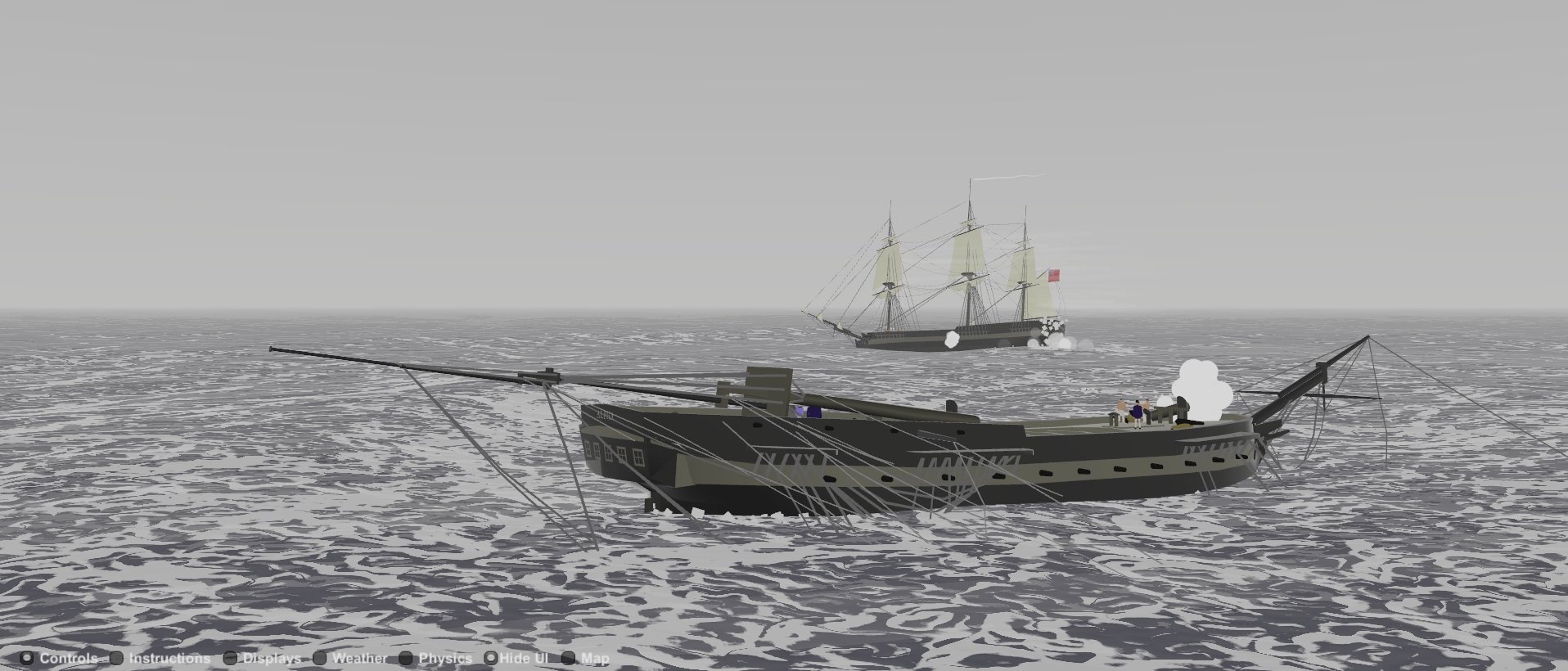The Flare Path: Games That Gruntle
Demaster and Commander
What devilry is this – a Flare Path devoid of disgruntlement? Either I'm going Semtex-soft in my old age, or I've spent the week in the company of games so marvellous they could turn Moaning Minnies into Appreciative Annies simply by smiling at them. Readers, meet Unity of Command II and A Painted Ocean, two titles that buoy the spirit and massage the mind as effectively as anything I've written about this year.
Next week's column will take the form of a Unity of Command II Wot I Think, but as UoC's slow-matured sequel releases next Tuesday, and I'm already in possession of something that professes to be review code, I thought I'd tell you how I feel with seven battles under my belt.
“Delighted” just about covers it. Tomislav Uzelac and co. have liberally embellished the trim, believable T-34 they unleashed on the world in 2011, and, thankfully, the result isn't a plodding, preposterous T-35.
I've yet to encounter a feature in the post-Torch, West Front-focussed follow-up to the 22nd Best Strategy Game on PC that I don't like. A mere five minutes of play was sufficient to convince me that the replacement of those striking soldier busts with common-or-garden 3D unit models wasn't an aesthetic blunder. As the accompanying screenshots hopefully illustrate, free-zooming, rotatable UoC2 is a handsome fellow with a happy knack for communicating essential info stylishly.
Fog of War, together with more elastic time limits and victory conditions, should mean the son won't get called “puzzle-like” anywhere near as often as the father. Yes, the temptation to restart a scenario after a particularly dumb move remains (slim, slow victories and missed bonus objectives mean squandered Prestige – the in-game currency that buys reinforcements, HQ upgrades, and campaign choices) but early mistakes seldom dash all hope.
Still at the heart of play, supply lines have been transformed by placeable supply hubs, and a truck pool that can be used to boost the range of particular hubs. You aren't simply devising attack plans to fit existing supply networks anymore, you are dynamically shaping those networks to keep pace with offensives and deal with unexpected setbacks.
The new HQ mechanics are a similarly inspired piece of design. HQ units, so often simple morale/combat buffers in this genre, are sophisticated multifaceted game-changers at the very centre of your thinking in UoC2. Manually customised at regular intervals during the campaign, their physical location is massively important because subordinate units outside their command range can't take advantage of their myriad abilities – abilities like reorganisation (shuffling strength steps and specialists between units), specialised combat actions (feints, set-piece assaults, rearguards...), battlefield engineering, and the arrangement of emergency supply.
One of the game's cleverest concepts is stragglers. Obliterate an enemy unit and that unit doesn't vanish into thin air, it becomes a combat-incapable remnant that, over the course of following turns, attempts to make its way back to the nearest HQ or supply hub. If you enter a hex occupied by residual retreaters you capture them and may, as a consequence, receive intel about nearby enemy forces. Sometimes it pays to avoid rather than apprehend because dealing with sizeable clumps of fracas flotsam seriously slows advancing units. Stragglers that make it back to a HQ temporarily erode that HQ's unit ability to orchestrate, but wind up in the force pool so ultimately can be fed back into the fray. Like so many of the abstractions in the game, it's a brilliant bit of shorthand.
If you gave UoC's AI an inch, it seldom took anything as miniscule as a mile. I'm happy to report the ersatz commanders in the sequel seem every bit as vulpine. Purely in the interests of science, you understand, while dipping my toes into UoC2's fast-flowing current, I've "deliberately" given the AI numerous opportunities to punch holes in my lines, snatch supply hubs and VLs, gang-up on my sorriest soldiery, and withdraw/replace its own battered units before they are annihilated. It's grabbed those opportunities with both hands every time. If “Girded loins” isn't already in the minimum spec, it should be.
The build in my possession only offers the first three-mission chapter of the campaign (other scenarios like Overlord, Monte Cassino, and the Battle of the Bulge are provided as multi-variant single battles) so it's impossible at the moment for me to give you a feel for how that campaign flows or fails to flow. With uneven campaign difficulty an acknowledged UoC shortcoming, I'd be amazed if the follow-up suffered from the same fault, but tune in this time next week just in case my happy honeymoon turns sour in the next seven days.
* * *
Run your eye over a list of vehicle sims produced in the last 40 years and you'd think transport was a 20th Century invention. Interested in conveyances propelled by horseflesh, wind, or early steam tech? Go read a book, build a plastic kit, or visit a museum.
The lack of 3D square-rigger sims is something I've been grumbling about in FP since FP was knee-high to a seahorse. Little did I know, while I was busy sighing and lamenting, a clever chap called Neil Thapen was spending his evenings and weekends doing something a tad more constructive.
A Painted Ocean is an amazing free prototype tall ship sim boasting mesmerising sail management, globe-girdling oceans, and a surprising amount of nautical atmosphere. For a creation without gull mews, creaking rigging, or audible crews, it does an incredible job of evoking the world of Horatio Hornblower, Jack Aubrey, and Thomas Cochrane. Push the wind slider to starboard, swell the swell, and lower the camera to sea level (sadly, there's no first-person CaptainCam) and APO is one of the saltiest games around.
It's also splendidly educational. How do you turn a stationary Nelson-era frigate without resorting to lowered boats and tow lines? What should you do when, close-hauled on the port tack, beating up-Channel with a nor-easterly wind blowing strong and Dover bearing north two miles, the wind veers four points taking you flat aback? The sim's physics are strong enough to proffer plausible answers.
Flooding and sinking are not modelled but cannon balls and howling winds can cause havoc to a poorly handled or boldly set ship. Watching an ineptly conned vessel, losing spars, sails, and topmasts in a gale is truly awesome, and toppling a target's mainmast with a long-range salvo, profoundly satisfying.
Proper battle AI has yet to be coded, but spawn and engage another ship, and that ship won't sit idly by while you pound it to matchwood. Exciting pursuits are possible.
What Neil has already achieved is breathtaking. It's sad to think that APO, like Venus Patrol, another one of his designs, will probably never evolve into a fully rounded game with campaigns and missions. Apart from the following...
1. Corrections to ship handling, physics and language
2. Ability to repair masts, remove/add topgallantmasts etc.
3. Studdingsails and royals
4. Premade sail plans for different strengths of wind and points of sailing
5. More realistic wave model, different kinds of wave in different seas, etc.
6. Show winds on the map
7. Nicer map UI
8. Nicer clock UI
9. Flooding and sinking
10. Some variety in ship appearance, textured sails
11. Distinguish clouds, fog, rain
12. General atmospheric graphics and shader rewrite
13. Better Portsmouth harbour
14. (slightly) higher resolution landscape
15. Procedural (cubical) rocks & beaches along coasts
16. Fix physics glitches
17. Foam and spray
18. More years of weather, some randomization
19.Better stars
20. Port cities on the map
21. Usability tweaks to travel acceleration
22. Stop the guns sticking out all the time
23. Battle AI
...Neil, a restless spare-time coder, has no plans to take APO further. Would he be prepared to let another dev have a go? I asked him this question, along with several others, earlier this week.
RPS: It's easy to picture your engine powering a game about the great tea clipper races or a 3D Nantucket sequel. If you don't take the project further, would you be willing to licence your engine to another dev?
Neil: Unfortunately it's closer to a hacked-together prototype than to a robust engine which I could encourage anyone else to use.
RPS: Is there really no chance that APO will metamorphose into a full retail game?
Neil: Things like a campaign would largely be about sailing long distances, perhaps chasing other ships, over multiple hours or days. This would effectively be a second project with new design problems about compressing time and distance, which might not even use, in an important way, the moment-to-moment modelling which has been my focus so far. Unfortunately these days I have a couple of hours in the evening for programming, and there are other games I want to make. But I would like to work on battle AI, and, say, improved weather and studdingsails, as these don't need any fundamental additions to what the game is now.
RPS: The sailing physics convinced this landlubber. Do you think they'd convince a Hornblower or Bolitho?
Neil: I haven't tried it on a sailor yet. If any is reading this, please send me some feedback! It's difficult to get hold of quantitative information for ships like this. You can find some things about speed, but not about turning rates, heeling, exactly how it moves in waves, etc. And I'm sure there is a lot I could do to make the sea feel more real.
RPS: From a coding perspective which element of the game produced the most brow furrows?
Neil: I started this game after working on a flight sim (Venus Patrol). I hadn't seen a 3D simulation of square-rig sailing (this was before Naval Action was announced) and it seemed like an interesting thing to try. A sail is not so different from a wing, so I thought I had a handle on the physics. On the other hand, you can model a plane as having essentially no moving parts and only two or three axes of control, which it is natural to control directly via a joystick or mouse in the player's hand. A sailing ship is full of important moving parts, that are set in motion by hundreds of people, and is not something the captain directly controls. So the interface should feel very different from a flight sim.
Of course there is a lot more going on in the physics. Interaction between the sails gets complicated, and you have to handle the hydrodynamics of the hull going through the water. To model it properly you should worry about energy lost to waves at different speeds, the added inertia of the water that you push along with you, and so on. I ended up modelling it as a simple vertical wing, with some fudge factors that make things feel plausible to me. One tricky question is how much yaw stability the ship should have. If you are not travelling the same way you are pointing (which is the situation most of the time, as you are usually making leeway), should the ship naturally be stable, turning towards the direction of travel, or unstable, turning away from it? These old ships were somewhat unstable, more so than modern sailing yachts, which have sticking-out keels which act like the vertical stabilizer of an aeroplane. But how unstable? This makes a lot of difference to your turning circle, how easy it is to tack, and how important it is to balance the sail-plan fore and aft. Probably there is no one answer. Some ships were "ardent" or "griping", that is, easy to turn up into the wind when tacking; others were "slack".
For the interface, I wanted it to feel as though you were in indirect control of a complex machine, and I wanted to have nautical jargon in the foreground. I toyed with modelling it on the linux command line, but in the end the system of orders assembled by hotkeys is inspired by the interfaces of complex roguelikes, like NetHack or Dwarf Fortress.
RPS: If A Painted Ocean had a bibliography which books would be on it?
Neil: I have a battered set of the Aubrey/Maturin novels by Patrick O'Brian, which are the main inspiration for the game. My reference on ship-handling is John Harland, "Seamanship in the Age of Sail". It's based on old sailing manuals, so does not have a lot to say about the physics of sailing, but it has chapters like "heaving to" and "working ship in a tideway".
^ An early build
RPS: How did you acquire your coding skills and do you use them in your day job?
Neil: My day job is research in mathematical logic. This doesn't involve coding as such, although the skills are related. You can make a case that writing a mathematical proof is a kind of programming.
My entry into games programming was through making a graphics mod for Europa Universalis 3. In EU3 they switched from a 2D to a 3D map, and I thought the new map was murky-looking and not very suitable for a historical game. But they left the rendering code exposed in plain text files; you could tinker with them in notepad and get pretty things happening on the screen straightaway, with a bit of linear algebra. This was in the late 2000s, when amateur-friendly tools like GameMaker were becoming popular, so it was easy to move on from there. I had wanted to get into making games before, but was always put off by the amount of busywork you had to do before getting anything moving on the screen.
RPS: Thank you for your time.
* * *
























